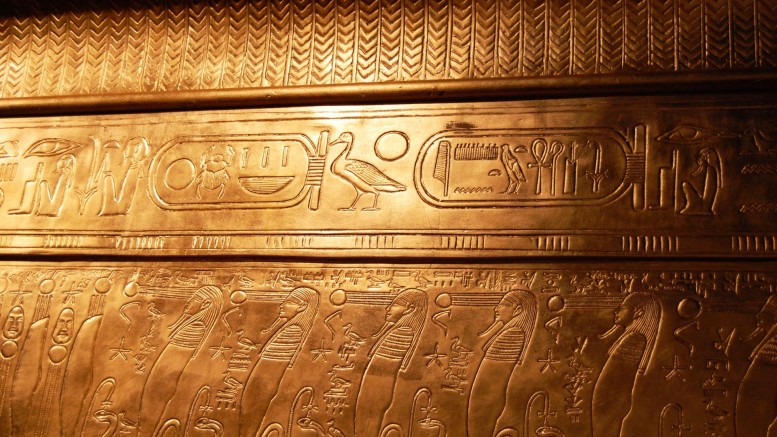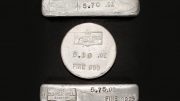The following is a release by the World Gold Council detailing global gold demand in the second quarter of 2016. The full 26-page Gold Demand Trends report is available for free download at www.gold.org.
Global gold demand reached 2,335 tonnes (75.1 million oz.) in the first half of 2016 with investment reaching record levels for any first half of a year (H1), 16% higher than the previous record in H1 2009, according to the World Gold Council’s latest Gold Demand Trends report.
The second quarter of 2016 continued in the same vein as the first quarter of this year with overall gold demand growing to 1,050 tonnes (33.8 million oz.), up 15% from the second quarter of 2015 figure of 910 tonnes, boosted by considerable and consistent investment demand. Investment demand reached 448 tonnes (14.4 million oz.) as investors sought risk diversification and a safe store of value in the face of continued political, economic and social instability.
Exchange traded funds (ETFs) had a stellar first half of the year at almost 580 tonnes due to the additional inflows in the second quarter of 237 tonnes. Bar and coin demand was also up in a number of markets in the second quarter, including the U.S. at 25 tonnes (up 101%), leading to bar and coin investment in the first half of 2016 of 485 tonnes, 4% higher than the first half last year.
A cause and effect of the growth in investment demand was a 25% rise in the US$ gold price, the strongest first-half price gain since 1980. This contributed to lacklustre consumer purchasing, particularly in price sensitive markets.
While there were increases for jewellery demand in the U.S. (up 1%) and Iran (up 10%), the customary powerhouses of China and India saw drops in the second quarter of 15% to 144 tonnes and 20% to 98 tonnes. China faced a challenging quarter against a relatively soft economic backdrop and the implementation of new hallmarking legislation in May. Meanwhile, India was further impacted by rural incomes remaining under pressure, as well as the government’s decision to increase excise duty.
Central bank demand decreased 40% in the second quarter of 2016 to 77 tonnes, compared to 127 tonnes in the same period last year, resulting in net purchases for the first half now totalling 185 tonnes. While this quarter was the lowest level of net purchases since the second quarter of 2011, it comes amid a significant rise in gold prices over the first half of 2016, dramatically increasing the value of central bank gold holdings to US$1.4 trillion. Central banks are still expected to be key contributors to global demand, as gold provides diversification from currency reserves and, most notably, the dollar.
The global picture for gold is dominated by considerable and continued investment demand driven by the West as investors rebalance their portfolios in response to the ever-expanding pool of negative yielding government bonds and heightened political and economic uncertainty.
At the same time, the global gold market is, and has always been, based on balance, and we see a gradual return for the jewellery market in the second half of 2016.
Total supply for the second quarter of 2016 saw an increase of 10% to 1,145 tonnes (36.6 million oz.) compared to 1,042 tonnes in the second quarter of 2015. The primary driver of this increase was recycling, which saw a significant rise of 23%, as consumers capitalized on the rising gold price, leading to first half recycled gold supply of 687 tonnes, 10% higher than the 626 tonnes seen in the first half of 2015.
Mine production remained broadly flat at 787 tonnes (25.3 million oz.), versus 790 tonnes in the second quarter of 2015, while gold producers added 30 tonnes (965,000 oz.) to the hedgebook.
Production levels continue to plateau, a consequence of cost management which has been the focus of the industry for the last couple of years. Higher production from existing and newer projects was more than offset by declines at larger projects.
Canadian mine output rose by 3 tonnes year-on-year in the second quarter, as continued ramp-up of the Eléanore and Cochenour projects added to increases at Canadian Malartic and Detour Lake. In Mexico, production from Fresnillo (+1.1 tonnes, +20%) again helped increase the country’s year-on-year gold output, as did Torex Gold’s El Limon-Guajes which entered commercial production at the end of the first quarter. Increases from the newer Aurora and Karouni projects helped Guyana register a higher year-on-year output (+2 tonnes). Although recent mine start-ups have made a positive contribution to overall mine production, this will not have a significant effect. The project pipeline remains constrained, with 2016 output from new mines coming on stream expected to be around half of what it was in 2015.
Year-on-year output from Mongolia (-6 tonnes) and Indonesia (-12 tonnes) saw declines; production from both Oyu Tolgoi (-5.2 tonnes) and Grasberg (-4 tonnes) fell owing to mine sequencing. In Peru, declines in production were once again led by Yanacocha, where production was 1.6 tonnes lower than in the second quarter of 2015.




Be the first to comment on "Facts ‘n’ Figures: Gold demand nears new record, WGC says"